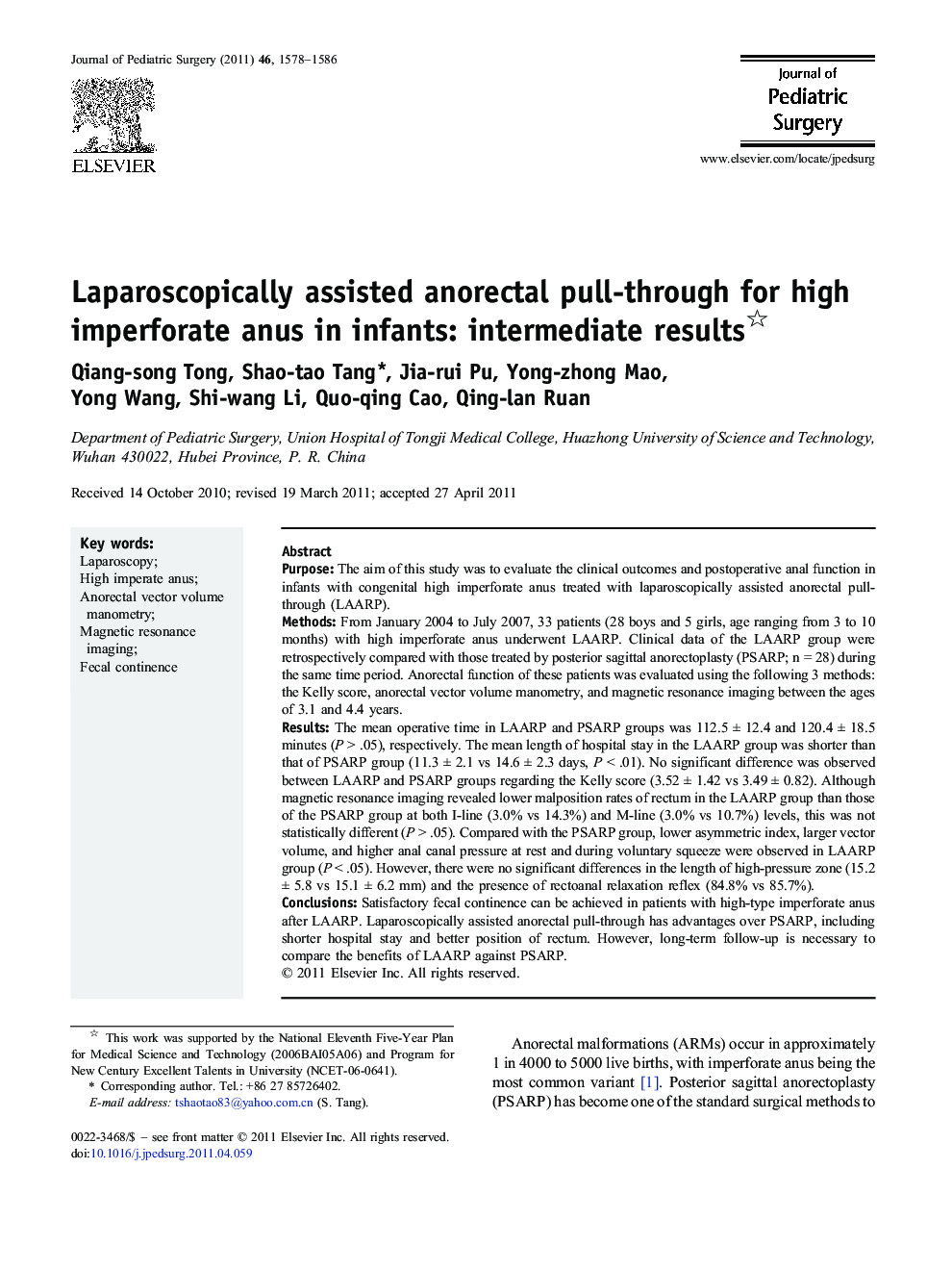| Article ID | Journal | Published Year | Pages | File Type |
|---|---|---|---|---|
| 4156882 | Journal of Pediatric Surgery | 2011 | 9 Pages |
PurposeThe aim of this study was to evaluate the clinical outcomes and postoperative anal function in infants with congenital high imperforate anus treated with laparoscopically assisted anorectal pull-through (LAARP).MethodsFrom January 2004 to July 2007, 33 patients (28 boys and 5 girls, age ranging from 3 to 10 months) with high imperforate anus underwent LAARP. Clinical data of the LAARP group were retrospectively compared with those treated by posterior sagittal anorectoplasty (PSARP; n = 28) during the same time period. Anorectal function of these patients was evaluated using the following 3 methods: the Kelly score, anorectal vector volume manometry, and magnetic resonance imaging between the ages of 3.1 and 4.4 years.ResultsThe mean operative time in LAARP and PSARP groups was 112.5 ± 12.4 and 120.4 ± 18.5 minutes (P > .05), respectively. The mean length of hospital stay in the LAARP group was shorter than that of PSARP group (11.3 ± 2.1 vs 14.6 ± 2.3 days, P < .01). No significant difference was observed between LAARP and PSARP groups regarding the Kelly score (3.52 ± 1.42 vs 3.49 ± 0.82). Although magnetic resonance imaging revealed lower malposition rates of rectum in the LAARP group than those of the PSARP group at both I-line (3.0% vs 14.3%) and M-line (3.0% vs 10.7%) levels, this was not statistically different (P > .05). Compared with the PSARP group, lower asymmetric index, larger vector volume, and higher anal canal pressure at rest and during voluntary squeeze were observed in LAARP group (P < .05). However, there were no significant differences in the length of high-pressure zone (15.2 ± 5.8 vs 15.1 ± 6.2 mm) and the presence of rectoanal relaxation reflex (84.8% vs 85.7%).ConclusionsSatisfactory fecal continence can be achieved in patients with high-type imperforate anus after LAARP. Laparoscopically assisted anorectal pull-through has advantages over PSARP, including shorter hospital stay and better position of rectum. However, long-term follow-up is necessary to compare the benefits of LAARP against PSARP.
